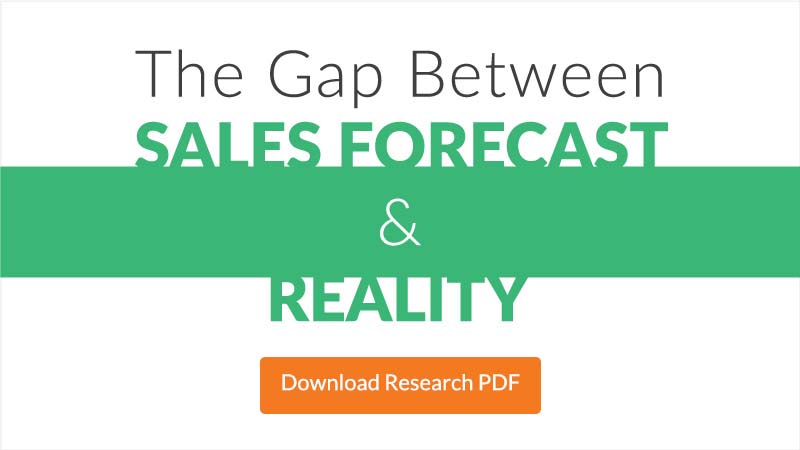You Suck at Sales Forecasting and I Can Prove It
You’ve probably heard that sales people are not good at forecasting. Maybe you’ve heard stats from surveys where sales leaders guess their accuracy and, like me, you’ve wondered, “is really true? Can only 45.8% of deals be forecasted accurately?” That’s no better than flipping a coin.
What makes sales forecasting so difficult? Is it the people? What to measure? The dimensions, or periods, judgements or sources? The cadence, categories or the adoption of a standard tool?
The Sales Forecasting Dilemma
When forecasting an opportunity every company has a unique method to its madness. Most start by creating an opportunity and attaching a (more or less arbitrary) forecasted close amount to it. Some companies believe in sales stages, others use stage probability, and still others use forecast categories.
It’s madness to watch companies go through their Friday forecast call. It’s a combination of business intelligence tools, CRM, and always our best friend Microsoft Excel. With all of these tools and all of these methods, companies still struggle to accurately predict the future.
To get to the bottom of the forecasting debate I decided to turn our research arm, InsideSales Labs, at the problem. Although I don’t mind surveys, I wanted the truth about the accuracy of forecasting from the cold hard data. Fortunately, XANT has the largest sales database in the world, which makes it super easy to bring the art and the science of sales together. For this study we looked at 270,912 closed-won opportunities and their forecasted close amounts across more than a dozen companies. In order to make this more interesting, we examined these opportunities 90 days out from closing. We predicted that 90 days out, even big deals would be mostly accurately forecasted, but we were wrong.
By comparing the 90-day forecasted amount and the closed-won amount for each deal, we discovered that only 28.1% were accurate (were within 5% of the forecasted amount). Dang! That was worse than any of us had imagined. Diving deeper into the data, we found that about half of the opportunities we analyzed missed by a margin of more than half. What was interesting was which direction sales reps guessed wrong – i.e., did they tend overestimate or underestimate. . .
Sales Reps Tend to Overestimate
What do you think? If a sales rep misses their forecasted number, do they underestimate or overestimate? The truth: they overestimate by nearly 2x! When sales reps’ forecasts were off, they tended to overestimate by an average $91,000 while underestimating by only $47,000 on average.
So how do you fix this? Well first you need to understand which deals are good and which are bad using a tool like Predictive Pipeline from XANT. Tools like these analyze 200+ attributes of historical opportunities to determine what influences the success of a deal in your organization. These characteristics are then applied to new opportunities, adjusting the forecast up or down based on the likelihood that those new deals close. A human can’t do that. We don’t have the cognitive capacity to analyze that much information nor the emotional objectivity necessary to apply that analysis rationally.
Accurate Sales Forecasting
Look, your entire business is run off of projections – from how you staff to where you invest and new opportunities you pursue. If you consistently have trouble predicting your number, you can’t have a sustainable business…period. Sadly, all the methods we’re trying to use right now are not working so it’s time to try something new, don’t you think?
Check out the research findings by InsideSales Labs here: RESEARCH
This post was originally published on LinkedIn. Follow my musings there for more sales statistics.

